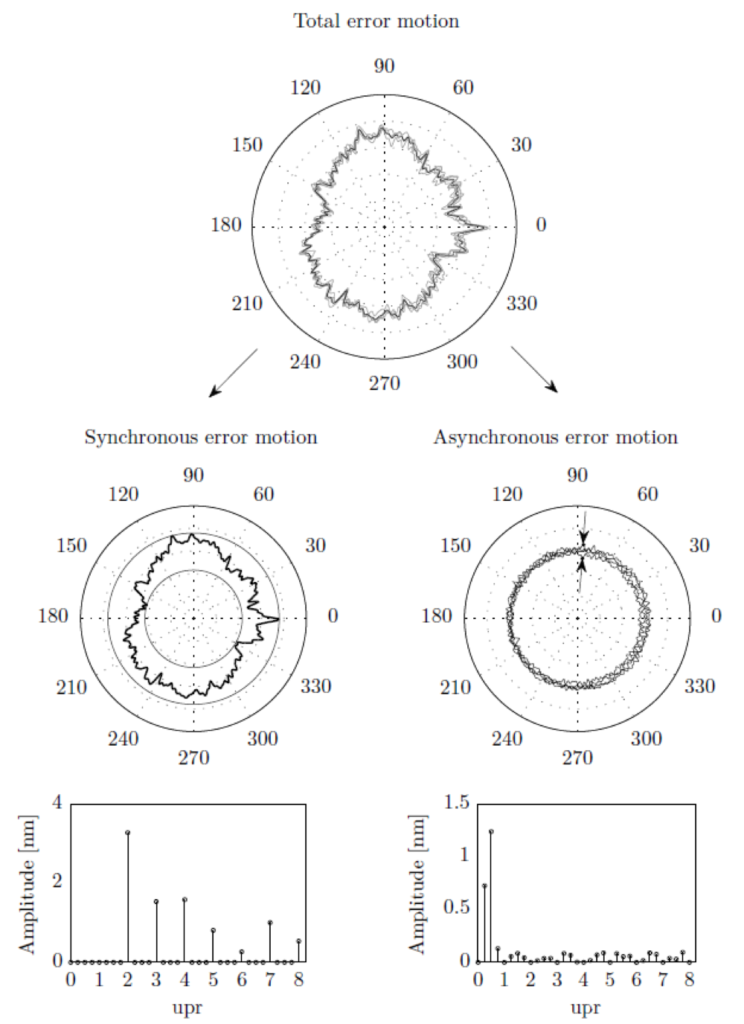Tilt, axial and radial error motion
Measurement setup:
When the stage rotates it does not move perfectly around the vertical Z-axis, but there are additional unwanted motions in the other 5 degrees of freedom:
- Movement in the vertical direction: axial error motion
- Movement in the plane perpendicular to the rotation axis: radial error motion. There are always 2 linear components X and Y
- Tilting of the axis around the X-axis and the Y-axis.Tilting is measured by measuring with 2 probes separated by a known Z-distance. From the difference between both probes, we calculate the tilt angle.
The total radial error is a combination of radial translation and tilting of the axis. We measure the radial error directly above the rotor surface. The higher above the stage, the higher the error because the contribution of the tilting keeps increasing. The total radial error is smallest between the 2 bearings, but this location is not accessible.
The graphs below are generated by performing a measurement every X degrees of the stage position, then plotting in a linear or polar plot. The probes can be oriented in X-direction or Y-direction, giving similar results.




